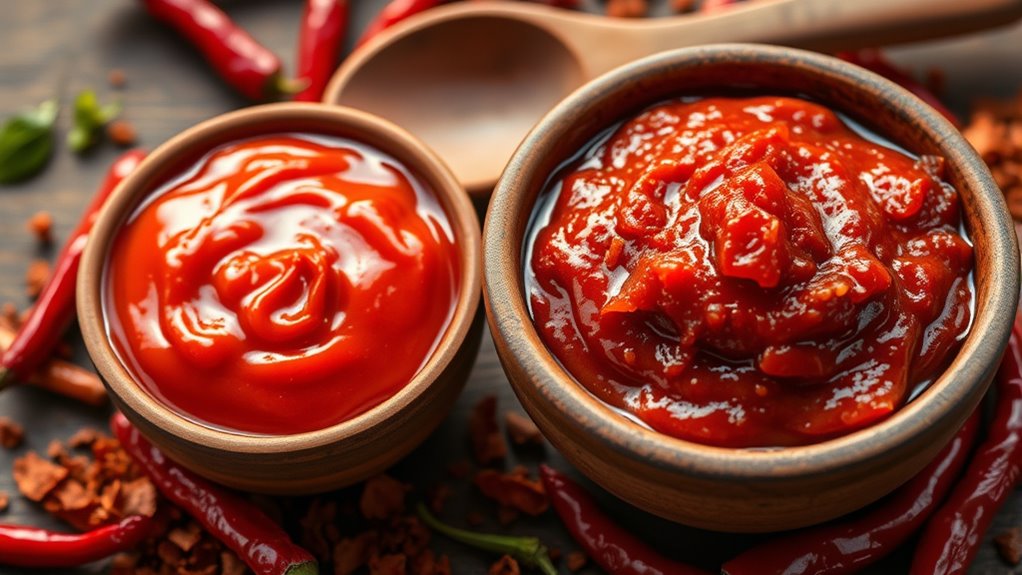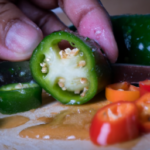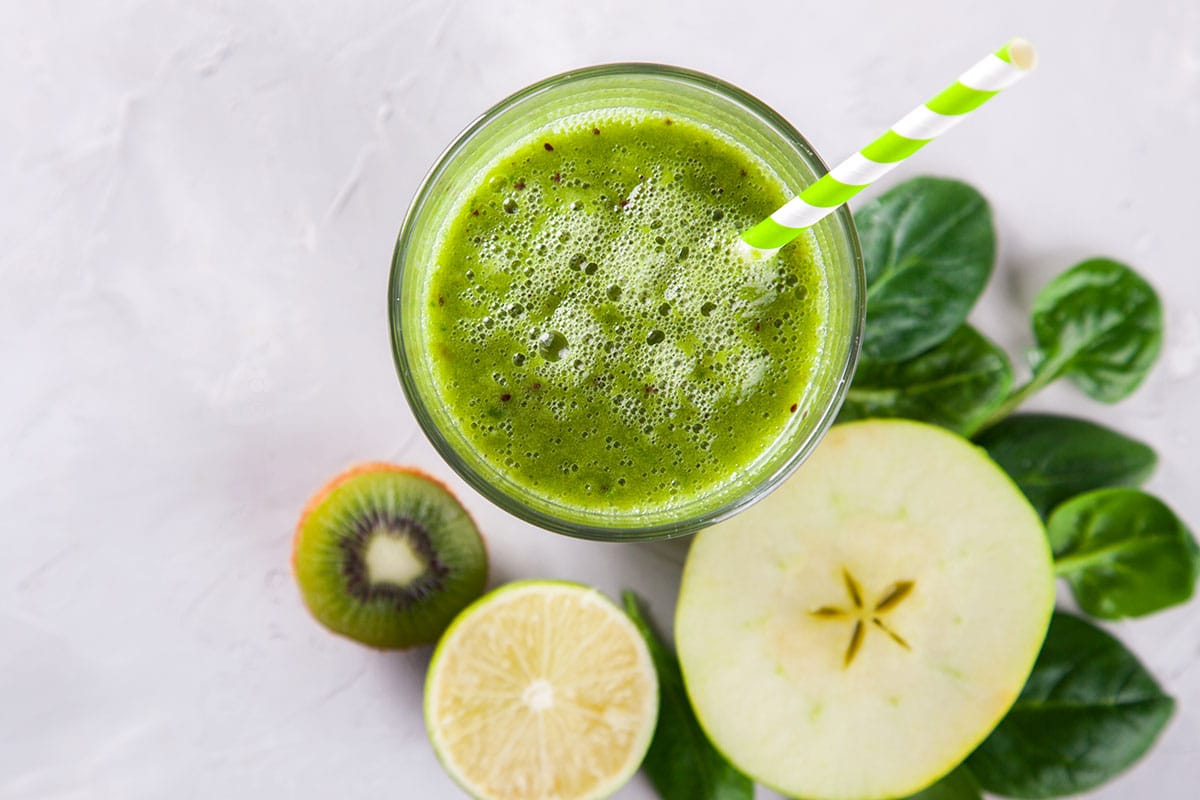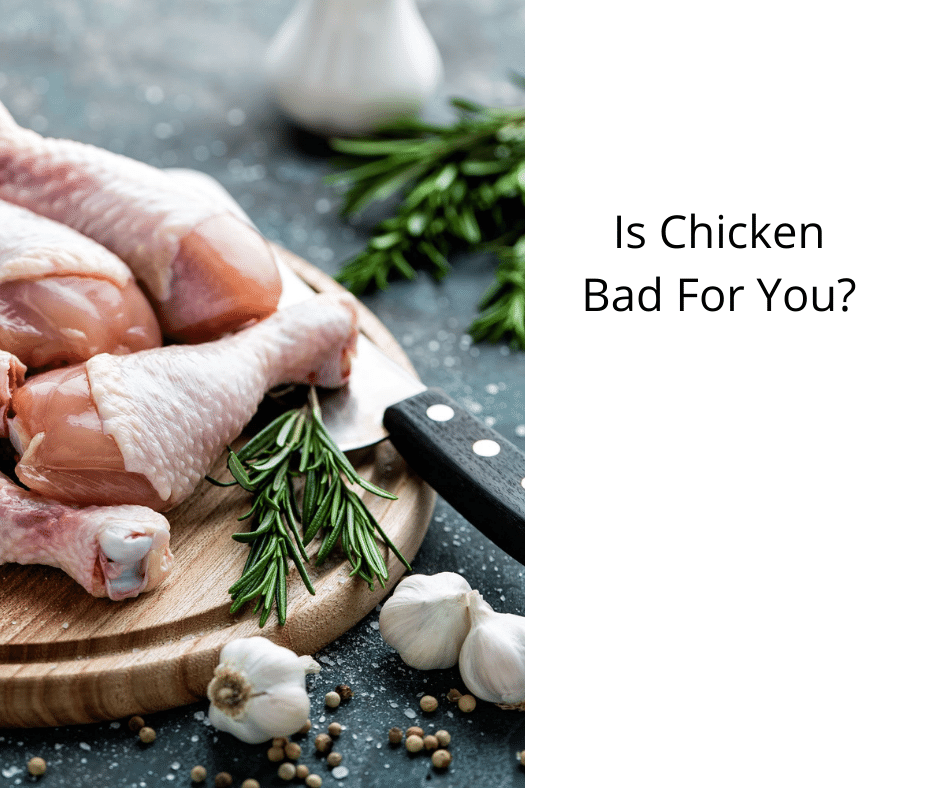To start spicy cooking with gochujang and harissa, understand their flavor profiles and spice levels. Use small amounts first, then taste and adjust to find your perfect heat. Gochujang adds sweetness and umami, while harissa offers smoky, pungent heat. Both ingredients help create flavorful, layered dishes without overwhelming. As you experiment, you’ll learn how to balance heat and flavor—continue exploring, and you’ll master this exciting cuisine.
Key Takeaways
- Gochujang and harissa are versatile chili pastes that add depth and spice to various dishes for beginners.
- Start with small amounts, taste, and gradually increase to control heat levels comfortably.
- Gochujang offers sweetness and umami, ideal for stews and marinades, while harissa provides smoky, pungent heat.
- Balancing spice with other flavors creates harmonious dishes; experimentation helps find your preferred spice level.
- Using these pastes effectively involves understanding their flavor profiles and incorporating them into different recipes.
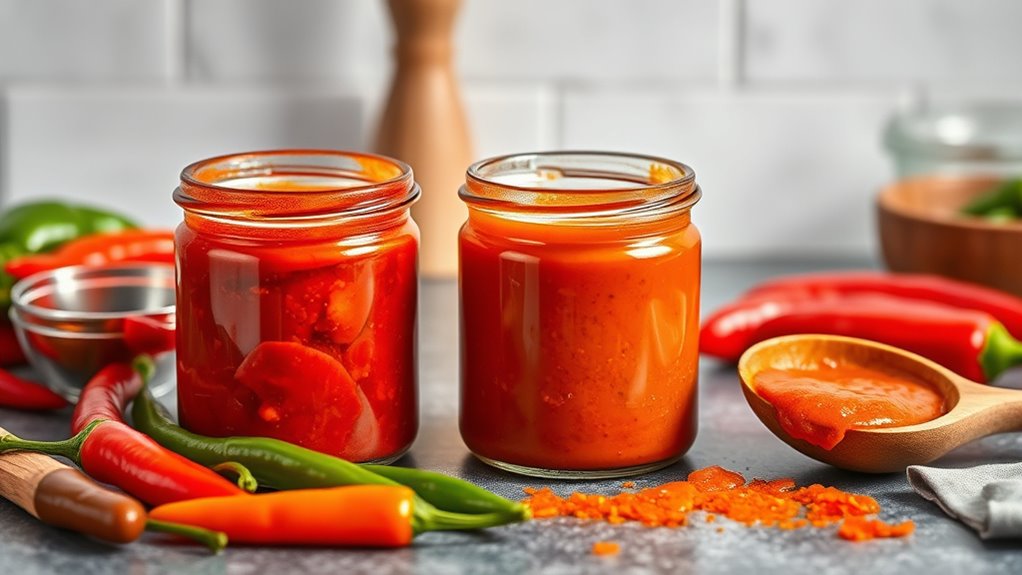
If you’re new to spicy cooking, it might seem intimidating at first, but with some simple tips, you can easily add heat to your dishes. The key is understanding how different spice levels and flavor profiles come into play. Gochujang and harissa are two versatile ingredients that can help you achieve just the right balance of heat and depth, even if you’re a beginner. Gochujang, a Korean chili paste, offers a unique combination of sweetness, umami, and moderate spice. Its flavor profile is rich and slightly fermented, which adds complexity to any dish. Harissa, a North African chili paste, tends to be more pungent and smoky, with a spicy kick that can be tailored to your heat tolerance. Both are excellent starting points for experimenting with spice levels without overwhelming your palate.
When you incorporate gochujang into your cooking, you’re adding more than just heat—you’re bringing a depth of flavor that can elevate stews, marinades, and even breakfast dishes. Because its flavor profile is complex, you don’t need a lot to give your food a noticeable lift. Start with a small spoon and taste as you go, adjusting the amount to match your preferred spice level. This way, you’ll develop a sense of how much heat is appropriate for your taste buds while also appreciating the layered flavors gochujang brings. Similarly, harissa can be mixed into sauces, rubbed on meats, or stirred into couscous and rice dishes. Its smoky, spicy notes add richness without overpowering the dish, making it perfect for beginners learning how to balance heat and flavor.
Understanding how these ingredients impact spice levels is vital. If you prefer milder heat, start with small quantities and gradually increase. Over time, you’ll learn how much to add for different dishes and how to adjust the flavor profiles to suit your preferences. Remember, the goal isn’t just to make food hot but to create a harmonious blend of spice and other flavors. Gochujang and harissa are both adaptable; they can be used sparingly to enhance subtle dishes or generously to create bold, fiery meals. With a little experimentation, you’ll develop a better sense of how spice levels and flavor profiles interact, making your cooking more exciting and satisfying.
Start small with spice and adjust gradually for balanced, flavorful heat.
Additionally, exploring the flavor profiles of different spices can help you better understand how to craft balanced dishes and avoid overpowering your ingredients. As you gain confidence, you can explore blending these pastes with other ingredients to customize your heat and flavor. The more you practice, the more intuitive it becomes to control spice levels and craft dishes that match your taste. Spicy cooking doesn’t have to be intimidating—it’s an art of balancing heat with flavor, and these ingredients are great tools to start mastering that balance.
Frequently Asked Questions
Can I Substitute Gochujang With Harissa in Recipes?
You can substitute gochujang with harissa in recipes, but keep in mind they have different flavors. Gochujang offers a sweet, savory, and slightly spicy taste, while harissa is more smoky and tangy. For a better gochujang substitution, consider mixing harissa with a bit of honey or soy sauce to mimic its sweetness and depth. If you need harissa alternatives, try other chili pastes with similar smoky or sweet profiles.
How Long Does Homemade Gochujang or Harissa Last?
You’re asking how long homemade gochujang or harissa lasts, and the answer is: it’s a marathon, not a sprint. Once you go through the fermentation process and properly preserve them, they typically last about 6 months to a year when kept refrigerated. Make sure to use clean utensils and check regularly for mold or off smells—these are signs it’s time to say goodbye. Proper homemade preservation keeps your spicy sauces fresh and safe.
Are There Health Benefits to Eating Spicy Foods?
Yes, eating spicy foods offers health benefits, especially by boosting your spicy metabolism. Capsaicin, the compound that makes foods spicy, can help increase fat burning and improve circulation. It may also reduce inflammation and pain. Incorporating spicy dishes into your diet can support weight management and overall health while making your meals more flavorful. Just be mindful if you have digestive sensitivities, and enjoy the benefits in moderation.
What Are the Best Storage Methods for These Pastes?
A picture is worth a thousand words, especially when it comes to storing pastes. To get the most fermentation benefits and preserve your gochujang and harissa, keep them airtight in the fridge. Use clean spoons to avoid contamination, and consider transferring leftovers to small jars. Proper paste preservation techniques make certain your spicy delights stay fresh longer and taste their best every time you use them.
How Do I Reduce Spiciness if a Dish Is Too Hot?
If your dish is too spicy, you can reduce the heat by adding a dairy product like yogurt, sour cream, or milk to mellow the spice. Additionally, adjusting the acidity with a splash of lemon or vinegar can help balance the flavors. These methods not only lower spiciness but also enhance the overall taste, making your dish more enjoyable without losing its essence.
Conclusion
Now that you’ve explored gochujang and harissa, you’re ready to spice up your cooking. Many believe that adding heat enhances flavor and depth, and research supports this—spicy ingredients can boost metabolism and improve mood. So, don’t shy away from experimenting with these fiery condiments. Embrace the heat, and you might just discover new favorites and unleash a whole new level of flavor in your dishes. Happy spicy cooking!
Ilana has been a vegan for over 10 years. She originally made the switch for health reasons, but soon found herself becoming more and more passionate about the ethical and environmental implications of a vegan lifestyle. Ilana is the author of The Graceful Kitchen, a blog all about veganism. She loves to cook up delicious and nutritious vegan meals, and share her recipes with others who are interested in leading a cruelty-free life. Ilana is also a strong advocate for using whole foods as the foundation of a healthy diet, and believes that going vegan is one of the best ways to achieve this.
